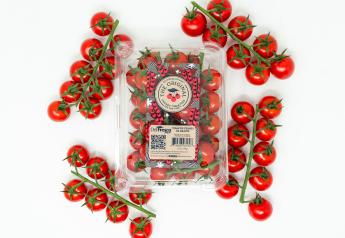Shrink programs common among profit leaders

Shrink management programs make a difference for the independent grocery retailers that have them.
About 25% of independents do, and those retailers reported 2.1% average shrink, better than the overall average of 3.2%, according to the 2017 Independent Grocers Financial Survey from the National Grocers Association and FMS Solutions Holdings.
Peter Larkin, president and CEO of the NGA, said he expects more retailers will invest in such programs.
“Those 25% ... are probably just a little bit ahead of some of their colleagues and peers, but everybody will be looking at what they can do to reduce their costs, and shrink is obviously a very large component of that on an annual basis,” Larkin said. “Some of that has to do with technology, some of it has to do with training in-store, so there’s a variety of different things that operators can do to address shrink, but I can tell you that they will double down on that when they’re trying to control their expense.”
Shrink for produce in particular varied by company size, with one-store operators reporting 7.8%, operators of 2-10 stores reporting 8.1%, operators of 11-30 stores reporting 3.8%, and operators of 31 or more stores reporting 2.9%.
The study suggests measuring shrink at the retail price rather than at cost as the former highlights the importance of shrink to the bottom line.
Additionally, being able to track shrink at the stock-keeping unit level allows grocers to plan better because it provides insight on which items are contributing to shrink, enabling retailers to make specific adjustments.
The profit leaders identified by the survey — the top 25% of the group — made controlling shrink a priority as they focused on fresh items.
Those grocers saw higher contributions from meat and produce than did the rest of the pack — 29.36% from meat, versus 25.57%, and 12.04% for produce, versus 10.31%.
Many of the profit leaders have shrink management programs, according to the study, and have higher-than-average inventory turns for all departments.
Overall, fresh has been and continues to be a strong suit for independent grocers, Larkin said.
“They’ve doubled down on it in this environment, so whether it’s fresh fruits and vegetables, whether it’s local fresh fruits and vegetables, the same with meat, they stake their reputation on the quality,” Larkin said. “Prepared foods, food-to-go, grab-and-go, meal solutions in the store ... It’s all about giving the customer what they want, when they want it and where they want it.”
Challenges
Significant food price deflation put pressure on retailers across the board in 2016, and an extraordinarily competitive environment added to the challenge.
Same-store sales for independents decreased by 1.62% on average; when adjusted for deflation, sales were flat compared with 2015.
While the deflation issue is expected to abate to some degree, competition was the top concern among independents that were surveyed.
Participants rated various industry challenges on a scale of 1 to 10 for impact on their business, and competition received a rating of 8.32, higher than in previous years and noticeably higher than the next concern on the list, healthcare costs and compliance, which was rated at 6.61.
Supercenters, conventional supermarkets and limited-assortment stores were listed as the formats putting the most pressure on independents.
“Wal-Mart has become very, very aggressive in adjusting their prices, and I think some of the larger retailers have reacted to that, as well as our members,” Larkin said. “E-commerce continues to grow, whether it is Amazon or Blue Apron or some of the other meal kits businesses. You’re also seeing a lot of growth in what I would characterize as the hard discounters, so the Aldis, the arrival of Lidl ... Dollar stores could be lumped into that category as well.”
In turn, independents are doing whatever they can to meet customer needs. Getting to know those shoppers and what they like to buy is critical, Larkin said.
Data-driven initiatives are growing in popularity among retailers for exactly that reason.
“They understand the opportunities that technology presents, and many of them are starting to offer those,” Larkin said.
Profit leaders are among those that have made that knowledge a priority. According to the study, they were more likely to have loyalty programs.
“They have the right mix of products based on what their demographics are,” Larkin said. “They have figured out how to communicate to them, give them relevant offers, relevant promotions ... Many of them have expanded their health and wellness offerings, their food-to-go offerings, having dietitians in the store, pharmacies in the store, just being able to understand that consumer.
“The flip side is ... they understand the most important thing in the supermarket business, and that is expense control,” Larkin said. “Not expense control that takes away from the customer experience, but (that) really figures out where they’re spending their dollars and how they can deliver a better product at a cheaper cost.”







